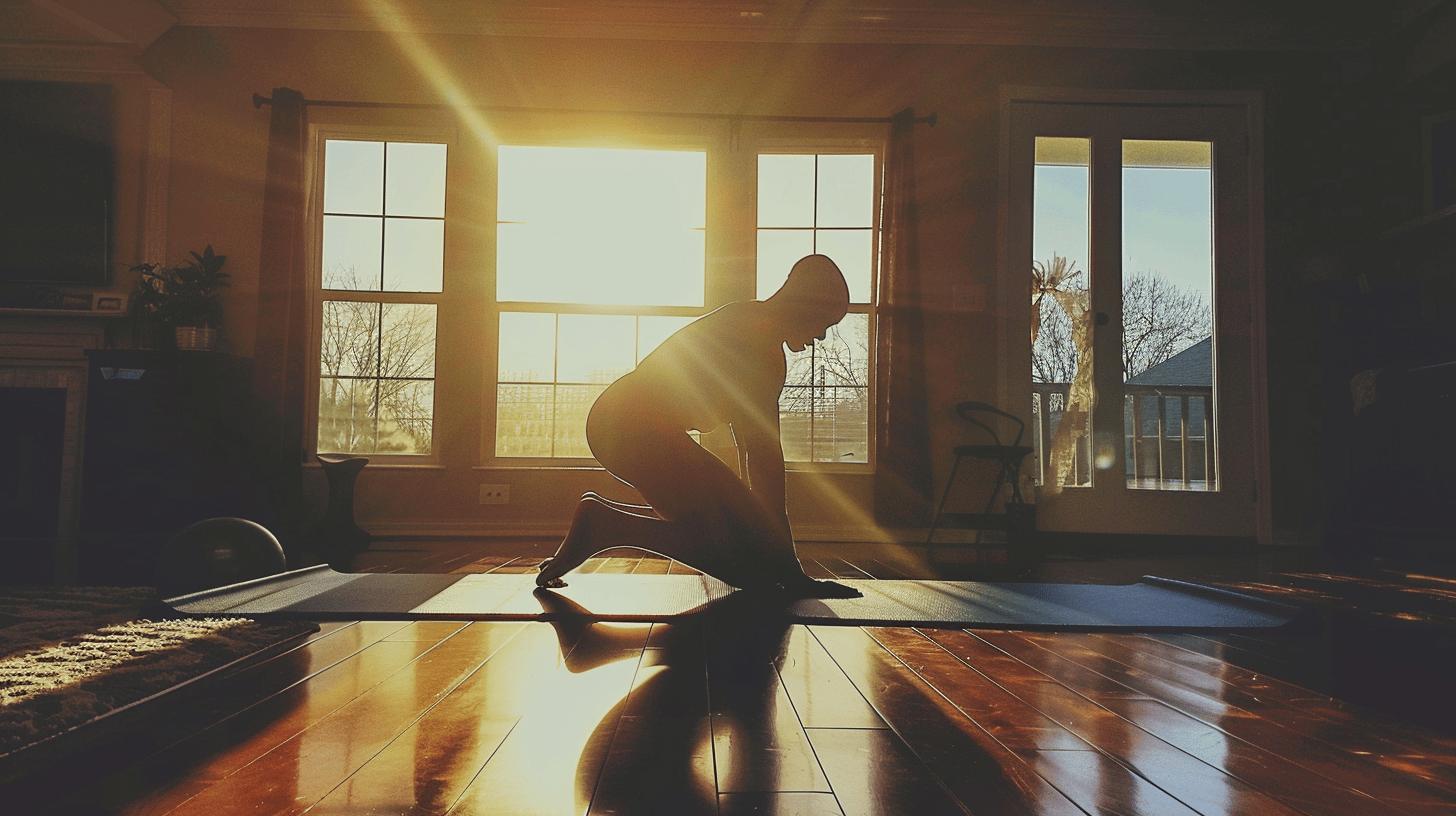Are your knees sabotaging your running game? Strengthening your knees is paramount for avoiding injury and enhancing performance. Dive into this guide to discover key exercises that target the quadriceps, hamstrings, glutes medius, and glutes maximus—muscles crucial for knee stability. Incorporating these workouts 2-3 times a week, with the aid of Thera-Band resistance bands, can significantly improve your running endurance and comfort. Let's explore the exercises that can transform your knees from a liability into your strongest asset.
Key Exercises to Strengthen Knees for Running
Strengthening the key muscles around the knee, such as the quadriceps, hamstrings, glutes medius, and glutes maximus, is crucial for enhancing knee stability and function. These muscles play a vital role in absorbing the impact forces during running, reducing the risk of injury, and improving overall performance. Focusing on these muscle groups can help runners maintain proper form and prevent common issues like runner's knee.
10 essential exercises to strengthen knees for running:
- Wall Sit
- Standing Hamstring Stretch
- Standing Quad Stretch
- Single Leg Glute Bridge
- Step-Up With Knee Drive
- Sitting Leg Raises
- Single-Leg Box Step-Down
- Forward Lunge
- Lying Hamstring Curl With Dumbbell
- Clamshells
For optimal results, perform these exercises 2-3 times a week. Thera-Band resistance bands can be used to increase the effectiveness of some exercises, such as clamshells and leg raises. It is important to avoid exercises involving knee flexion if experiencing knee pain. Consistency in training and gradual progression are key to building knee strength and ensuring long-term stability.
How to Strengthen Knees and Ankles for Running
Strengthening both knees and ankles is essential for maintaining overall stability and minimizing the risk of injury during running. Strong knees and ankles help absorb impact forces, support proper running form, and enhance performance. Key muscles to focus on include the quadriceps, hamstrings, glutes, gastrocnemius, and soleus. It's crucial to avoid any exercises that cause pain or discomfort, as these can exacerbate existing issues or create new ones.
| Exercise | Target Area |
|---|---|
| Wall Sit | Quadriceps, Glutes |
| Standing Calf Raise | Gastrocnemius, Soleus |
| Single-Leg Balance | Ankle Stabilizers, Glutes |
| Step-Up with Knee Drive | Quadriceps, Hamstrings, Glutes |
| Seated Ankle Dorsiflexion | Tibialis Anterior |
Integrating these exercises into a regular workout routine can significantly enhance knee and ankle stability. Performing them 2-3 times a week will yield the best results, with gradual progression to avoid overloading the muscles. Consistency is key, and using equipment like resistance bands can increase the intensity of some exercises. Always listen to your body and adjust the exercises as needed to ensure a safe and effective training regimen.
Best Knee Strengthening Exercises at Home

Home exercises can be highly effective for strengthening the knees, particularly for those with weak knees who need to minimize load-bearing. These exercises focus on improving muscle strength and stability, which can help prevent injuries and enhance running performance. One of the main benefits of home exercises is the convenience—they can be performed without the need for specialized equipment, making it easier to maintain a regular exercise routine.
7 best knee strengthening exercises at home:
- Clamshells
- Bridges
- Wall Sits
- Seated Leg Lifts
- Standing Calf Raises
- Side Leg Raises
- Step-Ups
Consistency is essential when it comes to knee strengthening exercises. Performing these exercises 2-3 times a week can yield significant improvements in knee stability and strength. Gradually increasing the intensity and duration of these exercises will help in building muscle endurance without overloading the knees. Staying committed to a regular exercise schedule will ensure long-term benefits and contribute to overall knee health.
How to Prevent Knee Pain When Running
Common causes of knee pain while running often include overuse, improper running form, and inadequate footwear. Overuse injuries occur when the knee is subjected to repetitive stress without sufficient rest. Improper running form can place undue stress on the knee joint, while wearing shoes with insufficient cushioning can fail to absorb impact forces effectively. Addressing these issues is crucial for preventing knee pain and ensuring a healthy, pain-free running experience.
5 preventive measures for knee pain:
- Proper warm-up
- Regular stretching
- Wearing cushioned running shoes
- Core strength exercises
- Post-run stretching
Post-run care is equally important for maintaining knee health. Stretching after a run helps maintain muscle flexibility and reduces tension in the muscles surrounding the knee. This can prevent stiffness and promote quicker recovery. Incorporating core strength and general mobility exercises into your routine can improve overall stability and support proper running mechanics. By committing to these preventive measures, runners can significantly reduce their risk of knee pain and enjoy a more sustainable running practice.
Runner's Knee Treatment and Recovery
Runner's knee, also known as patellofemoral pain syndrome, is primarily caused by overactivity and poor running posture. When runners engage in repetitive motion without adequate rest, they put excessive stress on the knee joint, leading to inflammation and pain. Improper running form can exacerbate this issue by causing uneven distribution of forces across the knee, which further contributes to discomfort and potential injury. Addressing these root causes is essential for effective treatment and prevention.
5 key treatments for runner's knee:
- Rest
- Ice
- Compression
- Elevation
- Rehabilitation exercises
Rest is crucial to allow the knee to heal and reduce inflammation. Applying ice to the affected area can help manage swelling and pain. Compression using bandages or knee sleeves supports the knee and prevents further swelling, while elevation helps reduce fluid accumulation by encouraging blood flow away from the knee. Rehabilitation exercises are vital for strengthening the muscles around the knee, improving flexibility, and correcting any imbalances that could be causing pain.
Following a consistent rehabilitation plan is essential for recovery. This plan should include exercises specifically designed to target the muscles around the knee, such as the quadriceps, hamstrings, and glutes. Consistency in performing these exercises will help rebuild strength and stability, reducing the risk of recurring pain. Additionally, incorporating proper warm-up routines and ensuring correct running posture can further aid in preventing runner's knee. Sticking to this plan can significantly enhance knee function and facilitate a quicker, more effective recovery.
Final Words
Strengthening knees for running involves targeted exercises, key muscles, and the right tools.
The blog covered various effective exercises such as wall sits, hamstring stretches, and glute bridges.
Strengthening both knees and ankles was highlighted as crucial, with specific exercises targeting lower body stability.
Consistency in performing home exercises and preventive measures like proper warm-ups can help avoid knee pain.
Effective runner's knee treatment includes rest, ice, and rehabilitation exercises.
Adopting these strategies enhances knee strength, ensuring a safer and more enjoyable running experience.
FAQ
How do I strengthen my knee for running?
Strengthening the knee for running involves targeting key muscles such as the quadriceps, hamstrings, glutes medius, and glutes maximus. Recommended exercises include wall sits, hamstring stretches, quadriceps stretches, and single-leg glute bridges.
How do runners keep their knees healthy?
Runners keep their knees healthy by performing knee-strengthening exercises 2-3 times a week, maintaining core strength, using cushioning footwear, and incorporating proper warm-up and stretching routines before and after runs.
Can weak knees be strengthened?
Yes, weak knees can be strengthened by performing targeted exercises such as clamshells, bridges, seated leg lifts, and step-ups regularly. Consistency and avoiding exercises that cause knee pain are crucial.
How do you run with weak knees?
Running with weak knees involves focusing on strengthening surrounding muscles, using supportive footwear, starting with shorter distances, and gradually increasing running intensity. Also, perform regular knee and core-strengthening exercises to build stability.
Exercises to strengthen knees for running
Key exercises to strengthen knees for running include wall sits, standing hamstring stretch, standing quad stretch, single-leg glute bridge, step-up with knee drive, sitting leg raises, single-leg box step-down, forward lunge, lying hamstring curl with dumbbell, and clamshells.
Knee strengthening exercises at home
Effective knee strengthening exercises at home are clamshells, bridges, wall sits, seated leg lifts, standing calf raises, side leg raises, and step-ups. These exercises help build strength without requiring special equipment.
Physiotherapy exercise for knee pain
Physiotherapy exercises for knee pain include structured routines like quad sets, straight leg raises, heel slides, and hamstring curls. These exercises focus on gently strengthening the knee and improving flexibility.
How to strengthen knee ligaments
Strengthening knee ligaments involves performing exercises such as bridges, leg raises, and calf raises regularly. Engage in activities that enhance overall knee stability without causing pain or discomfort.
Knee strengthening exercises gym
Gym-based knee strengthening exercises include leg presses, hamstring curls, single-leg squats, lunges, and calf raises. Utilize resistance machines and free weights for added resistance.
Five knee strengthening exercises
Five effective knee strengthening exercises are wall sits, single-leg glute bridges, step-ups with knee drive, forward lunges, and clamshells. Each targets different muscles around the knee for comprehensive strengthening.
Knee strengthening exercises for runners PDF
A downloadable PDF of knee strengthening exercises for runners typically includes detailed instructions for exercises such as wall sits, hamstring stretches, quad stretches, and single-leg glute bridges, alongside visual aids for proper form.

